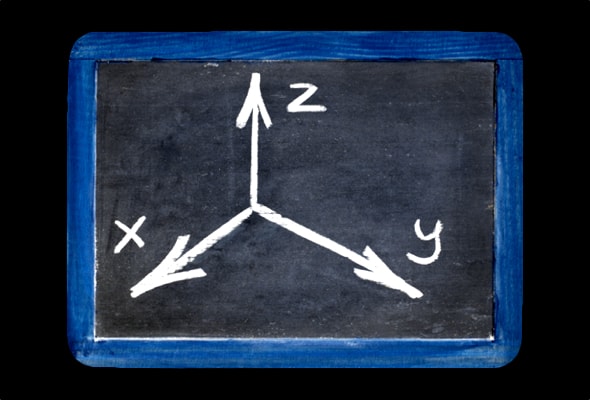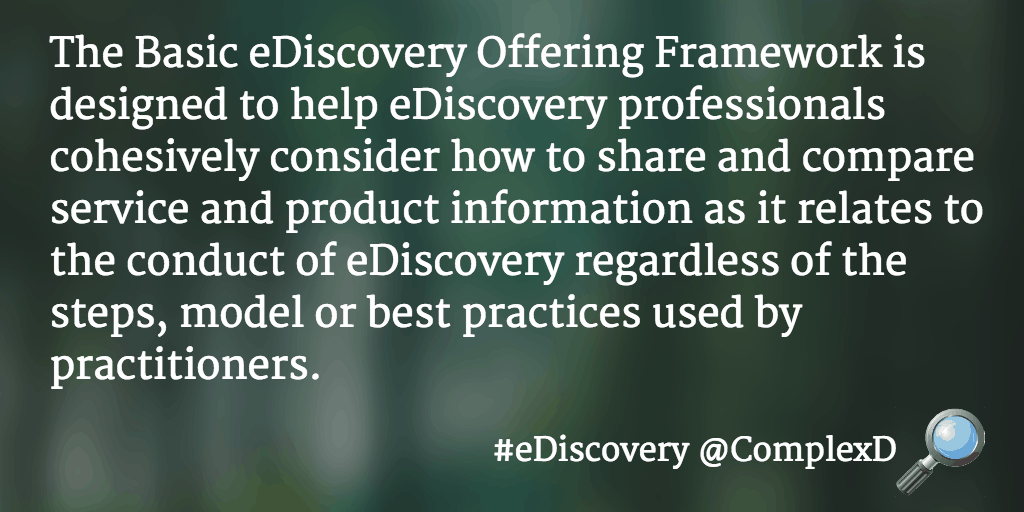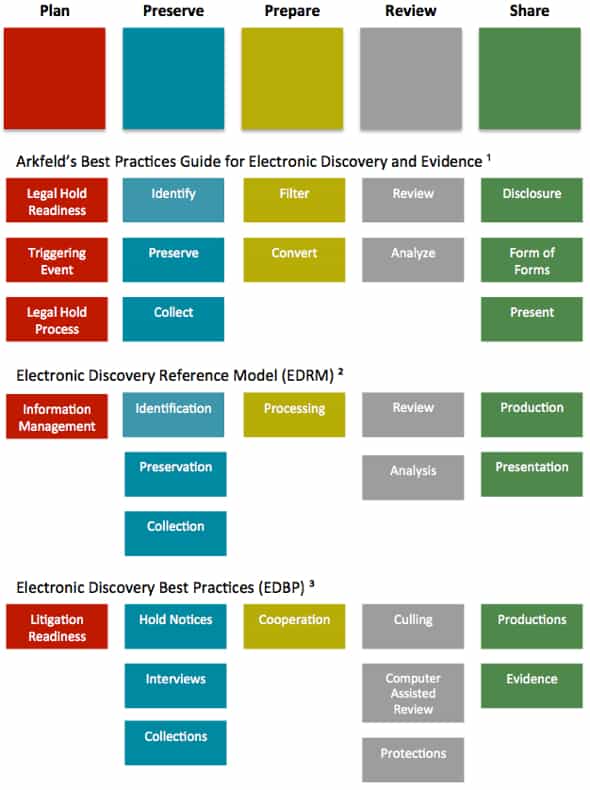|
|
ARCHIVED CONTENT
You are viewing ARCHIVED CONTENT released online between 1 April 2010 and 24 August 2018 or content that has been selectively archived and is no longer active. Content in this archive is NOT UPDATED, and links may not function.Organizing and Aligning Different Approaches to eDiscovery
With the goal of helping eDiscovery providers and consumers establish a basic framework for organizing and aligning the elements of three commonly referenced approaches to eDiscovery, the following Basic eDiscovery Offering Framework is provided for your consideration and use.
Basic eDiscovery Offering Framework
The Basic eDiscovery Offering Framework is designed to help eDiscovery professionals cohesively consider how to share and compare service and product information as it relates to the conduct of eDiscovery regardless of the steps, model or best practices used by practitioners. The framework was initiated as part of an exercise to align the step, model and best practice tasks highlighted in the following three commonly referred to eDiscovery approaches:
- Arkfeld’s Best Practices Guide for Electronic Discovery and Evidence – Technology Steps (Michael Arkfeld)¹
- The Electronic Discovery Reference Model – EDRM (EDRM)²
- Electronic Discovery Best Practices – EDBP (Ralph Losey)³
The framework provides for a common, high level group of five categories that appear to span the spectrum of potential eDiscovery tasks and can be used to help organize and align underlying legal requirements and technological capabilities. These five categories and their definitions are as follows:
General eDiscovery Offering Categories
- Plan: Proactive establishment and execution of tasks, techniques and procedures designed to maintain the integrity of electronically stored information (ESI) and facilitate the conduct of ESI discovery throughout the litigation lifecycle.
- Preserve: The execution of tasks, techniques and procedures designed to keep ESI safe from danger or harm throughout the litigation lifecycle.
- Prepare: The execution of tasks, techniques and procedures designed to make appropriate ESI ready for examination and evaluation.
- Review: The execution of tasks, techniques and procedures designed to examine and evaluate ESI in relation to audit, investigation or litigation objectives.
- Share: The tasks, techniques and procedures designed to allow others to use appropriate ESI as part of an audit, investigation or litigation.
In addition to these category definitions, the following clarifying definitions are provided to share the description and relationships between tasks, techniques and procedures.
Clarifying Definitions
- Task: A definite and specific instance or act of work.
- Technique: The method in which a task is accomplished.
- Procedure: The sequence of actions or instructions to be followed in accomplishing a task or series of tasks.
Figure 1 – General eDiscovery Framework Categories
A Practical Application: Aligning Three Commonly Referred To Approaches To eDiscovery
In viewing the high level eDiscovery tasks as represented in Arkfeld’s Technology Steps, the EDRM and the EDPB, through the lens of the Basic eDiscovery Offering Framework, the following graphic (Figure 2) shares one way that one might align categories and tasks. This graphically depicted example of category/task alignment is task centric and does not attempt to represent the workflow (techniques and procedures) associated with these tasks.
Figure 2 – General eDiscovery Category / Approach Task Alignment
Specific workflows for each of the three approaches aligned in this Basic eDiscovery Offering Framework are provided in detail in the respective published materials of each of the commonly referenced approaches and may be found at:
- Arkfeld’s Technology Steps – Description: http://bit.ly/EDE-Guide
- Electronic Discovery Reference Model – Diagram: http://bit.ly/EDRM-Diagram
- Electronic Discovery Best Practices – Diagram: http://bit.ly/EDBP-Diagram
One Suggested Approach To A Challenge With Many Reasonable Answers
While there may be many reasonable categories in which to “frame” the various eDiscovery tasks represented in these three commonly referenced eDiscovery approaches, the aforementioned category and task alignment hopefully will be useful as a starting place and baseline for consideration for eDiscovery professionals seeking to share and compare service and product information in a clear and concise manner.
——————-
¹ Michael R. Arkfeld, Arkfeld’s Best Practices Guide for Electronic Discovery and Evidence, 4.39(c), 72 (2010-11 Ed.)
² Electronic Discovery Reference Model, EDRM.net, 2012.
³ Ralph Losey, Electronic Discovery Best Practices, EDBP.com, 2012.

























